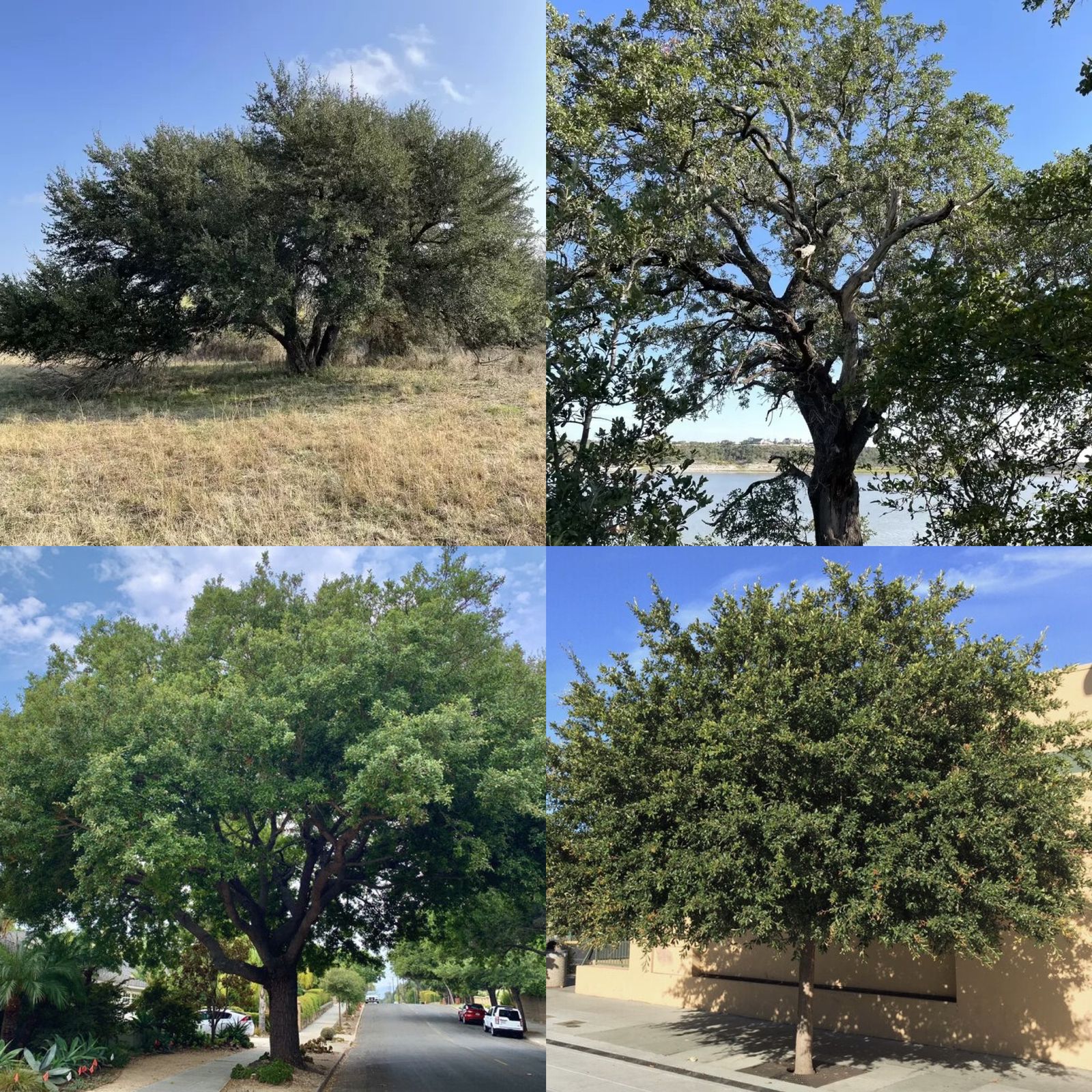What are the differences between the Quercus Virginiana and Quercus Fusiformus?
These are two species of trees that are very closely related. In fact, the Fusiformus used to be considered a variance of the Virginiana but is now considered its own species.
You can find both of these in Austin and the surrounding areas and in many cases you may even be seeing a hybrid of the two.
Common Names:
- fusiformis: Escarpment Live Oak or Texas Live Oak
- virginiana: Southern Live Oak
Native Range:
- fusiformis: Native to central Texas, parts of Oklahoma, and northeastern Mexico.
- virginiana: Native to the southeastern United States, from Virginia to Florida and west to Texas. Hence the name.
Size:
- Note that these trees often get wider than they do tall. This is unique and rare among larger trees.
- fusiformis: Usually 20-40 feet tall with a spread of 30-60 feet.
- virginiana: Con grow up to 80 feet tall with a spread of 100 feet or more.
Leaves:
- fusiformis: Leaves are usually smaller, 1-3 inches long, and often have a bluish-green color.
- virginiana: Leaves are typically larger, 2-5 inches long, dark green and glossy.
Acorns:
- fusiformis: Acorns are often more elongated or “fusiform” (spindle-shaped), hence the species name.
- virginiana: Produces acorns that are typically rounder and shorter.
Climate adaptation:
- fusiformis: More drought-tolerant and cold-hardy, better suited to the drier climate of central Texas.
- virginiana: Better adapted to coastal and more humid environments.
Soil preference:
- fusiformis: Adapted to limestone-based soils (alkaline) common to the Austin hills.
- virginiana: Adaptable to various soils but prefers well-drained, slightly acidic soils.
Disease resistance:
- fusiformis: Generally, more resistant to oak wilt, though not immune.
- virginiana: Slightly more susceptible to oak wilt disease.
Hybridization:
Where their ranges overlap, these species often hybridize, creating trees with intermediate characteristics.


